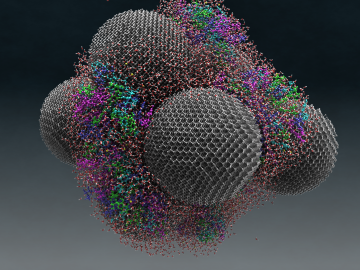
Filter News
Area of Research
- (-) Biological Systems (18)
- (-) Fusion and Fission (54)
- (-) Neutron Science (190)
- (-) Transportation Systems (11)
- Advanced Manufacturing (34)
- Biology and Environment (177)
- Biology and Soft Matter (5)
- Building Technologies (12)
- Chemical and Engineering Materials (4)
- Chemistry and Physics at Interfaces (11)
- Clean Energy (522)
- Climate and Environmental Systems (14)
- Computational Biology (6)
- Computational Chemistry (5)
- Computational Engineering (5)
- Computer Science (19)
- Data (1)
- Earth Sciences (1)
- Electricity and Smart Grid (3)
- Energy Frontier Research Centers (14)
- Energy Sciences (5)
- Fossil Energy (3)
- Fuel Cycle Science and Technology (3)
- Functional Materials for Energy (16)
- Fusion Energy (17)
- Geographic Information Science and Technology (3)
- Isotope Development and Production (3)
- Isotopes (35)
- Materials (433)
- Materials Characterization (2)
- Materials for Computing (36)
- Materials Synthesis from Atoms to Systems (13)
- Materials Under Extremes (12)
- Mathematics (1)
- National Security (79)
- Neutron Data Analysis and Visualization (4)
- Nuclear Science and Technology (74)
- Nuclear Systems Modeling, Simulation and Validation (3)
- Nuclear Systems Technology (1)
- Quantum Condensed Matter (4)
- Quantum information Science (9)
- Reactor Technology (1)
- Renewable Energy (4)
- Sensors and Controls (5)
- Supercomputing (311)
News Type
News Topics
- 3-D Printing/Advanced Manufacturing (9)
- Advanced Reactors (7)
- Artificial Intelligence (7)
- Big Data (2)
- Bioenergy (9)
- Biology (5)
- Biomedical (13)
- Biotechnology (1)
- Buildings (1)
- Chemical Sciences (6)
- Clean Water (2)
- Climate Change (1)
- Composites (2)
- Computer Science (14)
- Coronavirus (8)
- Critical Materials (1)
- Cybersecurity (1)
- Decarbonization (5)
- Energy Storage (10)
- Environment (10)
- Exascale Computing (1)
- Fossil Energy (2)
- Frontier (2)
- Fusion (22)
- Grid (2)
- High-Performance Computing (4)
- Isotopes (1)
- ITER (6)
- Machine Learning (3)
- Materials (14)
- Materials Science (25)
- Mathematics (1)
- Microscopy (4)
- Nanotechnology (11)
- National Security (2)
- Net Zero (1)
- Neutron Science (99)
- Nuclear Energy (29)
- Partnerships (3)
- Physics (10)
- Polymers (1)
- Quantum Computing (1)
- Quantum Science (7)
- Security (3)
- Simulation (3)
- Space Exploration (3)
- Summit (6)
- Sustainable Energy (6)
- Transportation (9)
Media Contacts
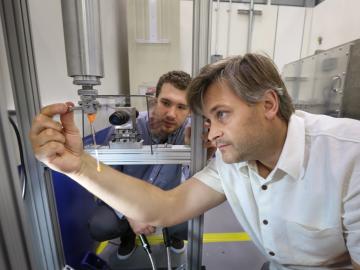
It’s common knowledge that driving aggressively can dent gas mileage, but it’s difficult to determine exactly how much gas drivers waste. A new study by researchers at the Department of Energy’s Oak Ridge National Laboratory has quantified the impact speeding and slamming on the brakes has on fuel economy and consumption. They found that aggressive behavior behind the wheel can lower gas mileage in light-duty vehicles by about 10 to 40 percent in stop-and-go traffic and roughly 15 to 30 percent at highway speeds. This can equate to losing about $0.25 to $1 per gallon.

After more than a year of operation at the Department of Energy’s (DOE’s) Oak Ridge National Laboratory (ORNL), the COHERENT experiment, using the world’s smallest neutrino detector, has found a big fingerprint of the elusive, electrically neutral particles that interact only weakly with matter.

Brian Davison, a researcher at the Department of Energy's Oak Ridge National Laboratory, has been awarded a 2017 fellowship by the Society for Industrial Microbiology and Biotechnology (SIMB).
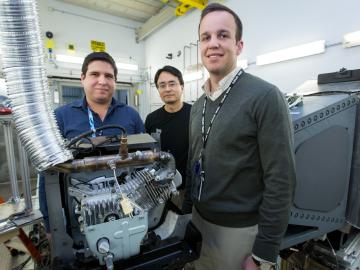

Researchers used neutrons to probe a running engine at ORNL’s Spallation Neutron Source

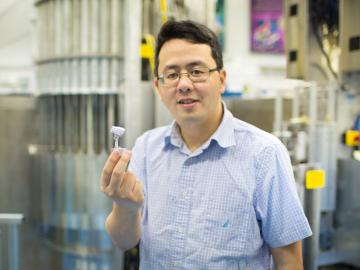
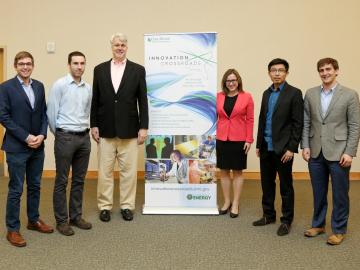
Oak Ridge National Laboratory today welcomed the first cohort of innovators to join Innovation Crossroads, the Southeast region's first entrepreneurial research and development program based at a U.S. Department of Energy national laboratory. Innovation Crossroads, ...
